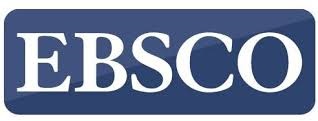Presenting a Model for Developing Employee Commitment in Iranian Government Organizations
Keywords:
Development of Employee Commitment, Iranian Government OrganizationsAbstract
Objective: Employee commitment [participation and role performance] typically encompasses mechanisms or methods that allow employees and their representatives to intervene in organizational decision-making within the company and to implement joint decisions regarding company management, thereby supporting the employees' viewpoint. Intervention and participation can be either direct or indirect.
Methodology: The current research aimed to present a model for developing employee commitment in Iranian government organizations. This study is of mixed-methods research type (qualitative and quantitative). In the qualitative phase, the Delphi method and research literature were used to identify concepts, dimensions, and components. In the quantitative phase, the model presented in the qualitative part was tested using a questionnaire tool and the Structural Equation Modeling (SEM) method with a Partial Least Squares (PLS) approach. The statistical population in the qualitative phase for Delphi analysis included managers and heads (10 individuals) and academic professors (10 individuals), all of whom were selected as the sample population. The statistical population in the quantitative phase comprised all employees of government organizations under the Deputy for Human Resource Development of the Presidency, with the Agricultural Bank considered as one of the government organizations and banks for the quantitative section's population. A multi-stage random sampling method was used to select an appropriate research sample. The population size was 16,130 individuals, with a sample size of 376 based on Morgan's table.
Findings: According to Delphi results, a total of 39 components were ultimately approved, and the quantitative phase questionnaire was designed based on 42 components. Considering the quantitative section's results, the dimensions of selection and employment, employee communications, empowerment, performance management, and compensation management had impact coefficients of 0.852, 0.798, 0.778, 0.88, and 0.773, respectively, in relation to processes. Furthermore, the dimensions of organizational culture, organizational structure, the country's ICT infrastructure, strategy and organizational goals, and the level of acceptance and development of EHRM had impact coefficients of 0.683, 0.796, 0.831, 0.923, and 0.822, respectively. The impact coefficients for processes and infrastructures were 0.954 and 0.895, respectively, in relation to the development of employee commitment.
Conclusion: Therefore, it can be concluded that the research model has a high capability in measuring the main variables of the research. Given the standard nature of the model, the software findings are reliable.
Downloads

Downloads
Additional Files
Published
Submitted
Revised
Accepted
Issue
Section
License
Copyright (c) 2024 Samad Ghaffarian (Author); Gholamreza Memarzadeh Tehrani (Corresponding Author); Nabiollah Mohammadi , Arshad Farahmandian (Author)

This work is licensed under a Creative Commons Attribution-NonCommercial 4.0 International License.















